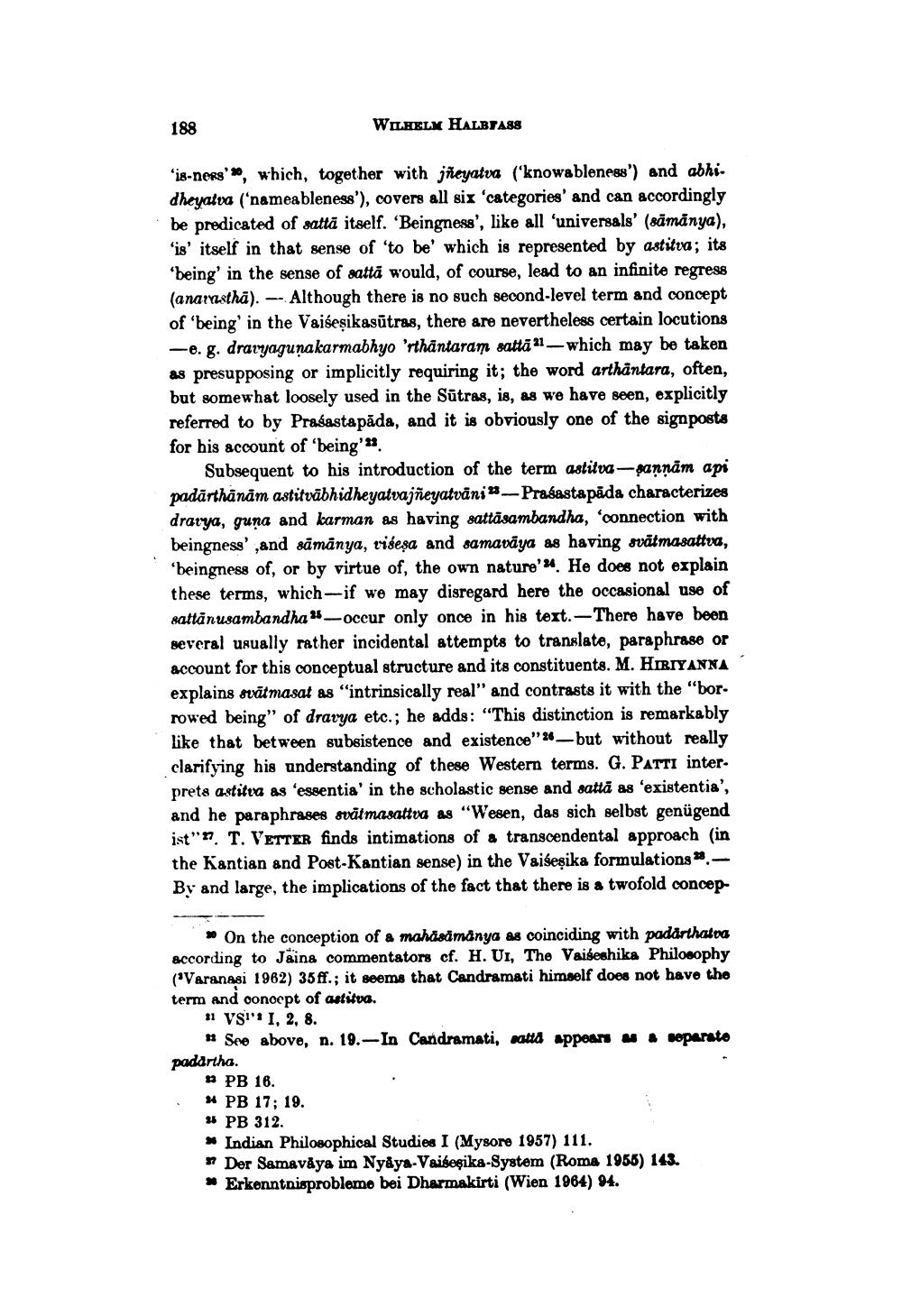________________
188
WILHELM HALBTASS
‘is-ners**, which, together with jñeyatva ('knowableness') and abhi. dheyatva ('nameableness'), covers all six 'categories' and can accordingly be predicated of sattā itself. 'Beingness', like all 'universals' (sämänya), 'is' itself in that sense of 'to be' which is represented by astitva; its 'being' in the sense of sattā would, of course, lead to an infinite regress (anarnstha). -- Although there is no such second-level term and concept of 'being in the Vaišeşikasūtras, there are nevertheless certain locutions
-e. g. draryagunakarmabhyo 'rthäntaram sattā 11 - which may be taken as presupposing or implicitly requiring it; the word arthântara, often, but somewhat loosely used in the Sūtras, is, as we have seen, explicitly referred to by Prasastapāda, and it is obviously one of the signposts for his account of being'*
Subsequent to his introduction of the term astitva-sannām api padārthanam astitvābhidheyatvajñeyatvāni --Prasastapāda characterizes drarya, guna and karman as having sattā sambandha, 'connection with beingness and sämänya, višeşa and samavāya as having svätmasattva, 'beingness of, or by virtue of, the own nature'. He does not explain these terms, which-if we may disregard here the occasional use of sattānusambandhaus -- occur only once in his text. There have been several usually rather incidental attempts to translate, paraphrase or account for this conceptual structure and its constituents. M. HIRIYANNA explains svātmasat as "intrinsically real" and contrasts it with the "bor. rowed being" of dravya etc.; he adds: “This distinction is remarkably like that between subsistence and existence" 24—but without really clarifying his understanding of these Western terms. G. PATTI interprets astitva as 'essentia' in the scholastic sense and sattā as 'existentia', and he paraphrases svátmasattva as "Wesen, das sich selbst genügend ist". T. VETTER finds intimations of a transcendental approach (in the Kantian and Post-Kantian sense) in the Vaiseșika formulations.By and large, the implications of the fact that there is a twofold concep
* On the conception of a mahasamanya as coinciding with padarthatoa according to Jaina commentators cf. H. UI, The Vaiseshika Philosophy ("Varanasi 1962) 35ff.; it seems that Candramati himself does not have tho term and conocpt of astitva.
11 VSI': 1, 2, 8.
* See above, n. 19.-In Candramati, sotto appears a separato padartha.
# PB 16. # PB 17; 19. # PB 312. * Indian Philosophical Studies I (Mysore 1957) 111. » Der Samaväys im Nyåya-Vaiseşika-System (Roma 1956) 143. * Erkenntnisprobleme bei Dharmakirti (Wien 1964) 94.




